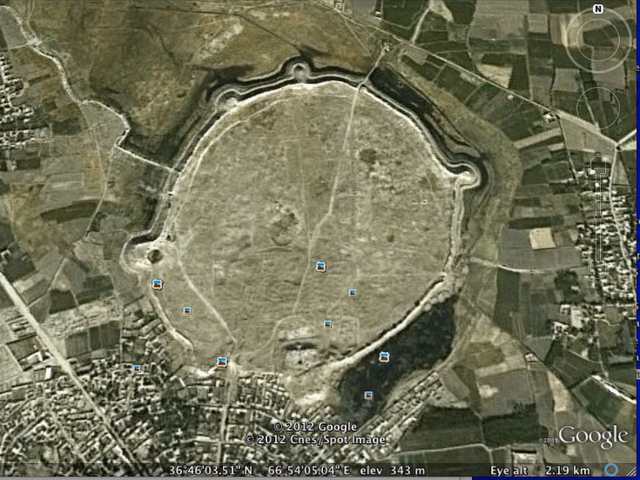City of Balkh
Nestled in what is now northern Afghanistan, Balkh (/bɑːlx/; Persian/Pashto: بلخ Balkh; Bactrian: βαχλο ẞaxlə) stands as an ancient city that once flourished as a hub of Buddhism, Sufism, and Zoroastrianism. Presently a modest town in the Balkh province, approximately 20 kilometers northwest of Mazar-e Sharif, and 74 km (46 mi) south of the Amu Darya, it echoes its historical significance from the earliest days of Khorasan.
With Marco Polo praising it as a “noble and great city,” the ancient Balkh, renamed Bactra under Greek rule, emerged as a key center and capital of Bactria or Tokharistan. Although now largely reduced to ruins, located about 12 km from the Balkh River’s right bank, at an elevation of approximately 365 m (1,200 ft), remnants of the grandeur persist.
Notable beyond the town limits is the expansive Buddhist monastery, later known as Naubahar (or Nava Vihāra in Sanskrit). Interestingly, French Buddhist Alexandra David-Néel linked Shambhala with Balkh, suggesting the Persian Sham-i-Bala, meaning “elevated candle,” as a potential etymology for its name. A Gurdjieffian perspective, presented by J. G. Bennett, posited Shambalha as Shams-i-Balkh, a Bactrian sun temple.
The Kalah (Castle) of Bactra, situated in the Balkh region, represented a prosperous realm encompassing the fertile plains of the Oxus River, bordered by the Pamir and Hindu Kush mountain ranges. Boasting a mild climate, well-irrigated lands, and abundant gold and gemstones, the palaces of this region were adorned with silk, gold, and precious stones. Recognized as the “Land of a Thousand Cities,” each with its Calah (Castle, Kala) and a King, Balkh stood as the largest and most majestic. Its peak influence spanned from 1000 BC to 600 AD, with Xuanzhang noting its many mountains, river-courses, and the production of excellent horses.
A hub of mounted warrior culture, Bactrian warriors played a role in history, joining Xerxes’ army during the invasion of Greece in 480, as documented by Herodotus. The decline of Balkh commenced around 1000 AD, ultimately succumbing to the destructive force of the Mongols.

